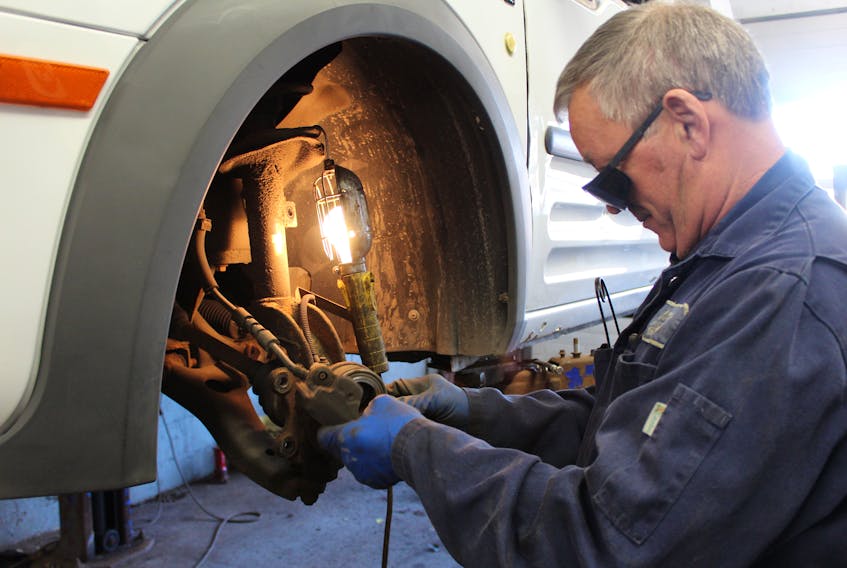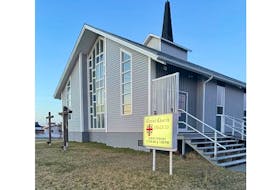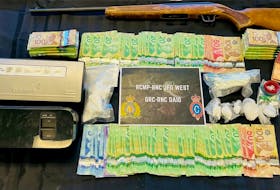The Boy Scouts have it figured out. Their motto — “Be Prepared” — applies to so many facets of everyday life, and one of those areas is the use of motor vehicles.
And when it comes to ensuring the safety of you, your passengers and those you share the road with, it is paramount that drivers have their vehicles examined for deficiencies at least twice a year, or more.
“Winter service — get it done,” says John Morris, owner and technician at Morris Service Station Ltd. on Freshwater Road in St. John’s.
“Old cars, new cars, it doesn’t matter. They can all have issues. There are lots of things that can cause problems. We have a lot of rust here in Newfoundland. There are potholes that jar things loose. You should pay a few extra bucks and get your car checked for these and other problems to make sure you are safe.”
Morris said it doesn’t matter where people take their vehicle, as long as they are getting regular service from a certified technician. Unfortunately, he said, most people don’t do this. Instead they are “tires only” people in the fall and the spring.
“These are good times to have your car serviced while it is in for tires. You should check your oil, fluids, brakes, windshield wipers, the front end,” he said.
“You don’t know what problems could have developed since you were in last. Could be a tie rod end, brakes or other damage that could make driving your vehicle dangerous. If you don’t have it checked, you will never know until it’s too late.”
Morris, like most technicians, has his own checklist of items he feels are necessary to ensure vehicle safety.
Because of the high salt content in the St. John’s area, for example, rust is an issue with most vehicles, and so rustproofing is a good idea. He says people should have it done seasonally to extend the life of the car.
Tires are another area he feels a lot of people overlook. He said a lot of drivers don’t use good-quality tires on their vehicles and often, during seasonal switchovers, those tires don’t get inspected to ensure they are up for the job.
“You always should inspect them before they go on to ensure they have lots of tread wear remaining, that they have no dry rot and are properly inflated and installed,” Morris said.
“For me, studded tires are preferred in my mind for winter driving. People who live outside of town and do lots of driving should use studded tires. The government recommends four studded tires, but if you don’t want studs, the ice radials they are making now do the same thing,” he added.
Top 10 tips
Prevent problems before they occur:
- Get your vehicle ready for winter in the fall.
- Install four matching winter tires.
- Pack an emergency kit.
- Learn and practice winter driving techniques before you need them.
- Plan your trip, check road and weather conditions.
- Remove all snow from your vehicle before each trip.
- Give yourself extra travel time in bad weather.
- Avoid using cruise control on slippery roads.
- Travel with a fully charged cellphone.
- Slow down and always wear your seatbelt.
Prevention is better than recovery
Winter driving can be risky and is hard on your vehicle and its engine. Prepare for winter in the fall, by getting a complete checkup of your vehicle.
Getting your vehicle ready for winter driving is as simple as following these guidelines:
Battery: Your motor needs a fully charged battery to start in cold weather. Clean battery posts and check the charging system and belts in addition to testing your battery in the fall and spring. Replace weak batteries before they fail.
Ignition system: Replace defective ignition wires, cracked distributor caps and worn spark plugs, since they can make starting difficult or may cause a sudden breakdown.
Lights: Make sure all lights work and that your headlights are properly aimed.
Brakes: Check or service your brakes. Pulling, change in pedal feel or unusual squealing or grinding may mean they need repair.
Tires: Check pressures often, especially before any highway driving. Properly inflated, high-quality winter tires will give you the best traction on winter roads and will increase fuel efficiency. A tire that has good pressure when checked in a warm garage will be under-inflated when it is below zero outside, because tire pressure goes down in the cold. That is why you should do your checks when the tires are cold. Use the maximum pressure amount shown in the owner’s manual or on the doorframe as a guide, but never go above the pressure shown on the tire sidewall. Check your spare tire pressure regularly. Since having four matching tires improves vehicle handling, don’t mix tires with different tread patterns, internal construction or size. Winter tires have been designed for use in snow. They carry a pictograph on the side-wall of a peaked mountain with a snowflake, meet high standards for winter traction performance and should not be confused with Mud + Snow (M+S) rated snow tires. Winter tires are a good idea, and may even be legally required where you live.
Exhaust system: Check for leaks that could send deadly carbon monoxide into your vehicle.
Heating and cooling system: Check your radiator hoses and drive belts for cracks and leaks. Make sure the radiator cap, water pump and thermostat work properly. Test the strength and level of the coolant/anti-freeze, and make sure the heater and defroster work well.
Windshield wipers: Make sure your wipers are in good condition. Replace blades that streak. Purchase wipers designed for winter use. Fill up on winter washer fluid in the -40° C temperature range and carry an extra jug in your vehicle.
Prepare for driving
- The safest strategy is to avoid driving in bad weather conditions. If you must drive, check weather and travel conditions before heading out.
- Be alert, well rested and sober behind the wheel and always wear your seatbelt.
- See and be seen. Remove all snow from your vehicle’s hood, roof, windows and lights. Clear all windows of frost and fog. If visibility becomes poor, find a place to safely pull off the road as soon as you can. If visibility is poor, put on your emergency flashers.
- Stay on main roads and drive carefully.
- Be prepared to make a call. Take a fully charged cellphone with you.
Pack a winter survival kit
The Canadian Automobile Association (CAA®) recommends you keep the following items in your trunk:
- Shovel
- Sand or kitty litter
- Traction mats
- Tow chain
- Compass
- Cloth or roll of paper towels
- Warning light or road flares
- Extra clothing and footwear
- Emergency food pack
- Booster cables
- Matches and a survival candle in a deep can (to warm hands, heat a drink or use as an emergency light)
- Fire extinguisher
- Extra windshield washer fluid
- Fuel line antifreeze
- Reflective vest
Keep the following items inside your vehicle.
- Road maps
- Ice scraper and brush
- Flashlight
- First aid kit
- Blanket (special “survival” blankets are best)
NOTE: In bad weather, put more distance between you and the vehicle in front of you.









